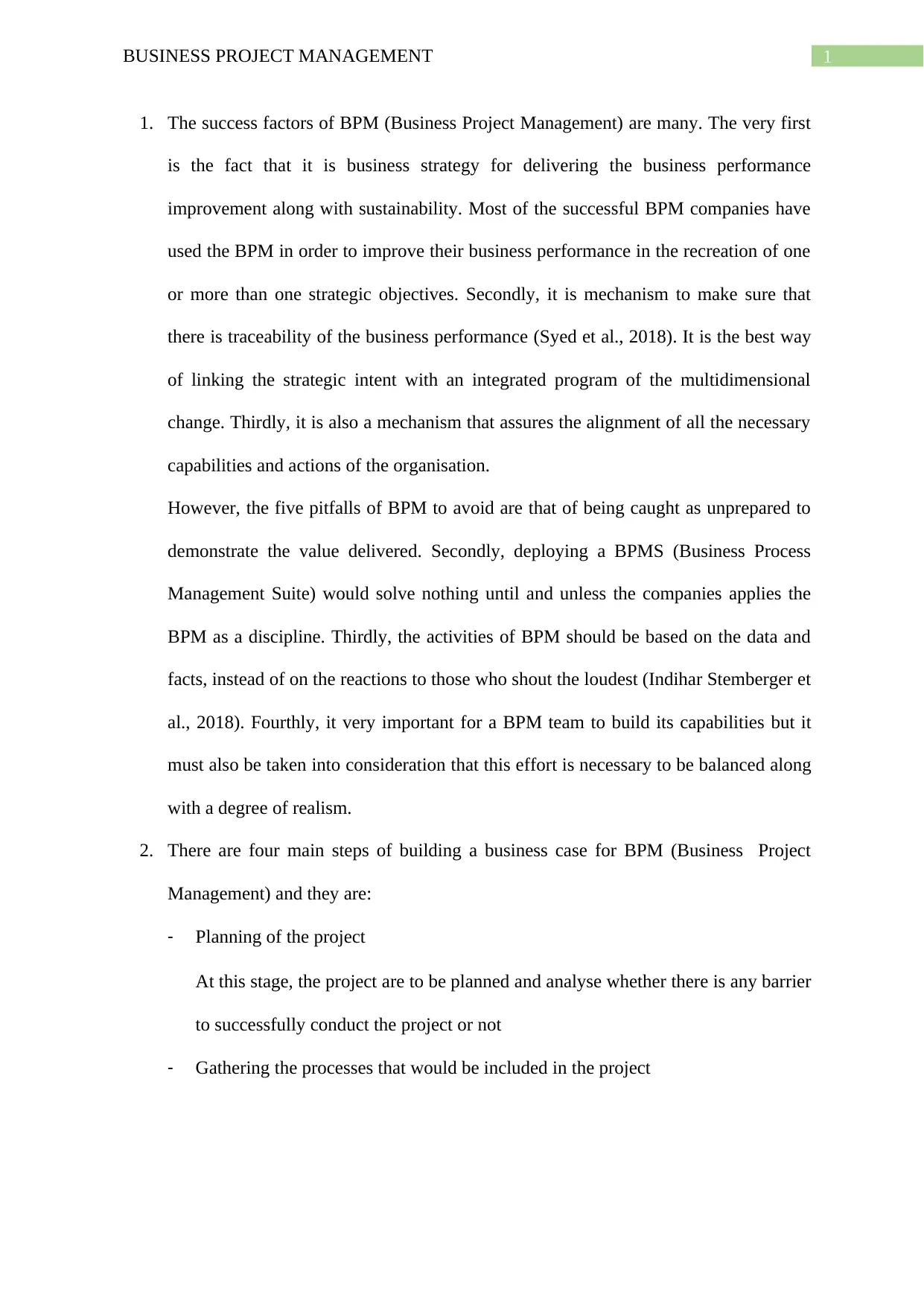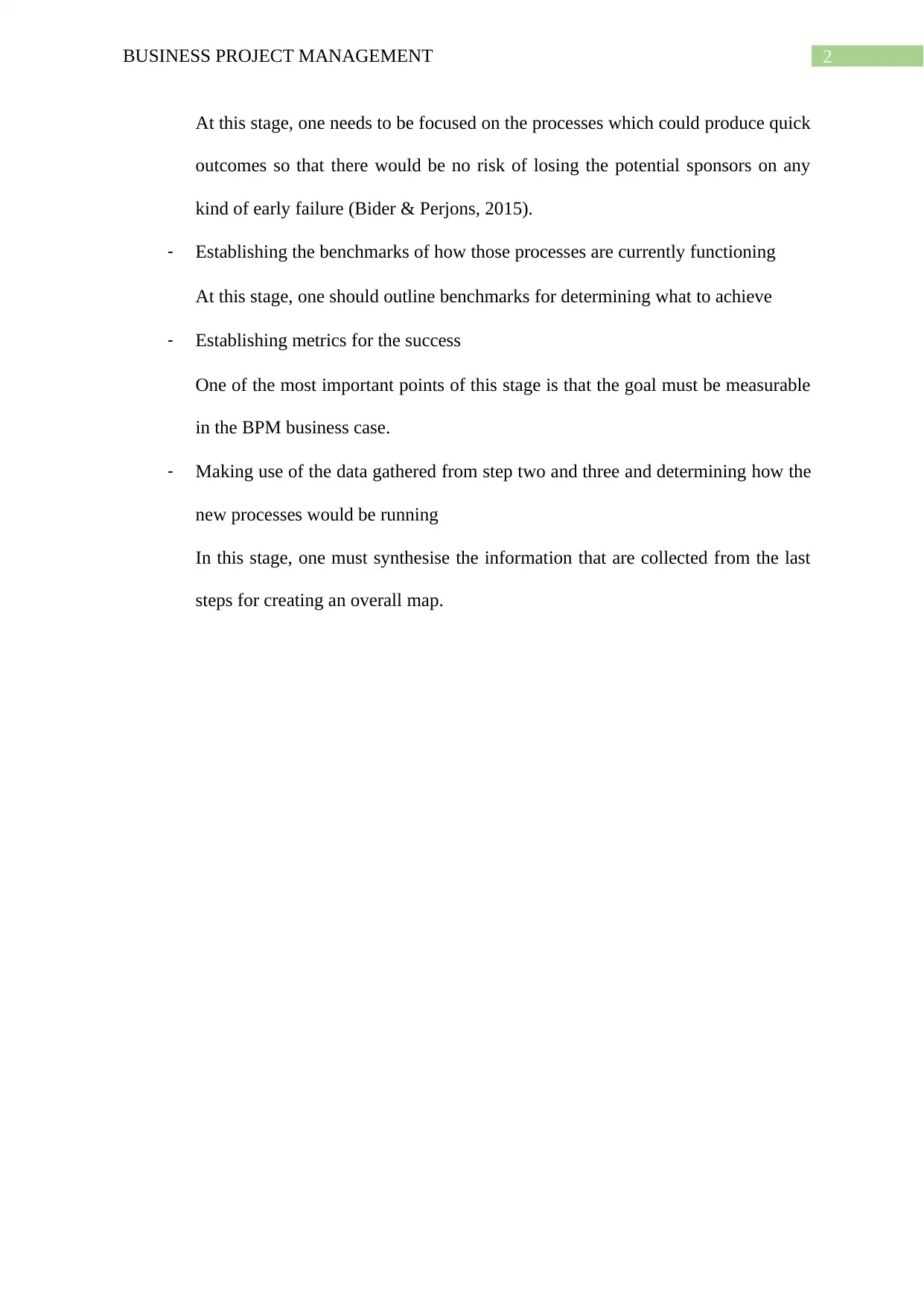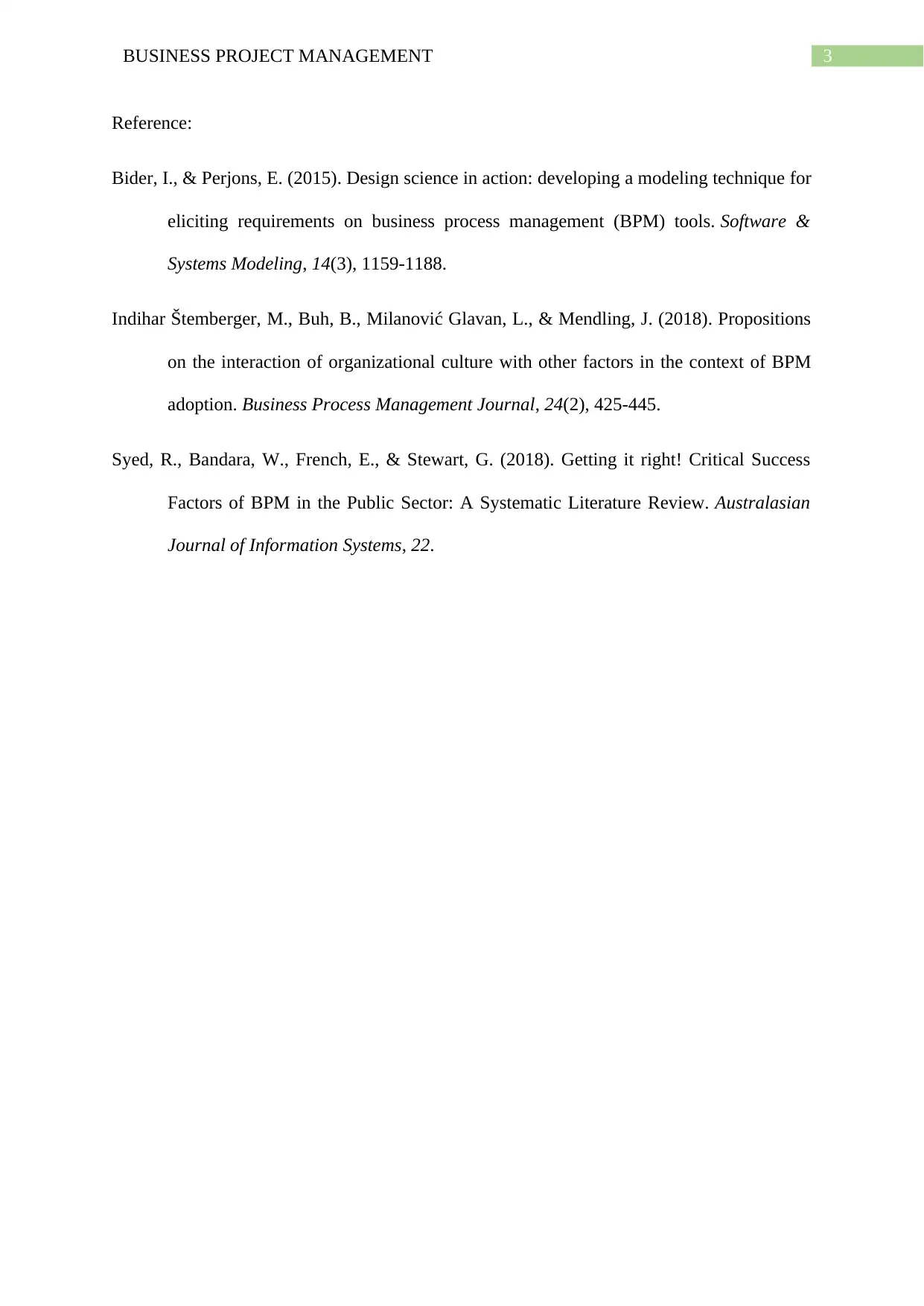Business Project Management Report: Success Factors, Steps, & Pitfalls
VerifiedAdded on 2023/06/10
|4
|630
|50
Report
AI Summary
This report examines Business Project Management (BPM), focusing on key success factors, pitfalls, and implementation steps. It highlights the importance of BPM in improving business performance and achieving strategic objectives. The report discusses the critical success factors of BPM, emphasizing the alignment of business strategy and the use of data-driven insights. It outlines the pitfalls to avoid, such as a lack of preparation and the need to balance capabilities with realism. The report further details the four main steps in building a business case for BPM, including project planning, process gathering, benchmarking, establishing metrics, and data synthesis. The report also includes references to relevant academic articles to support the analysis.
1 out of 4










![[object Object]](/_next/static/media/star-bottom.7253800d.svg)